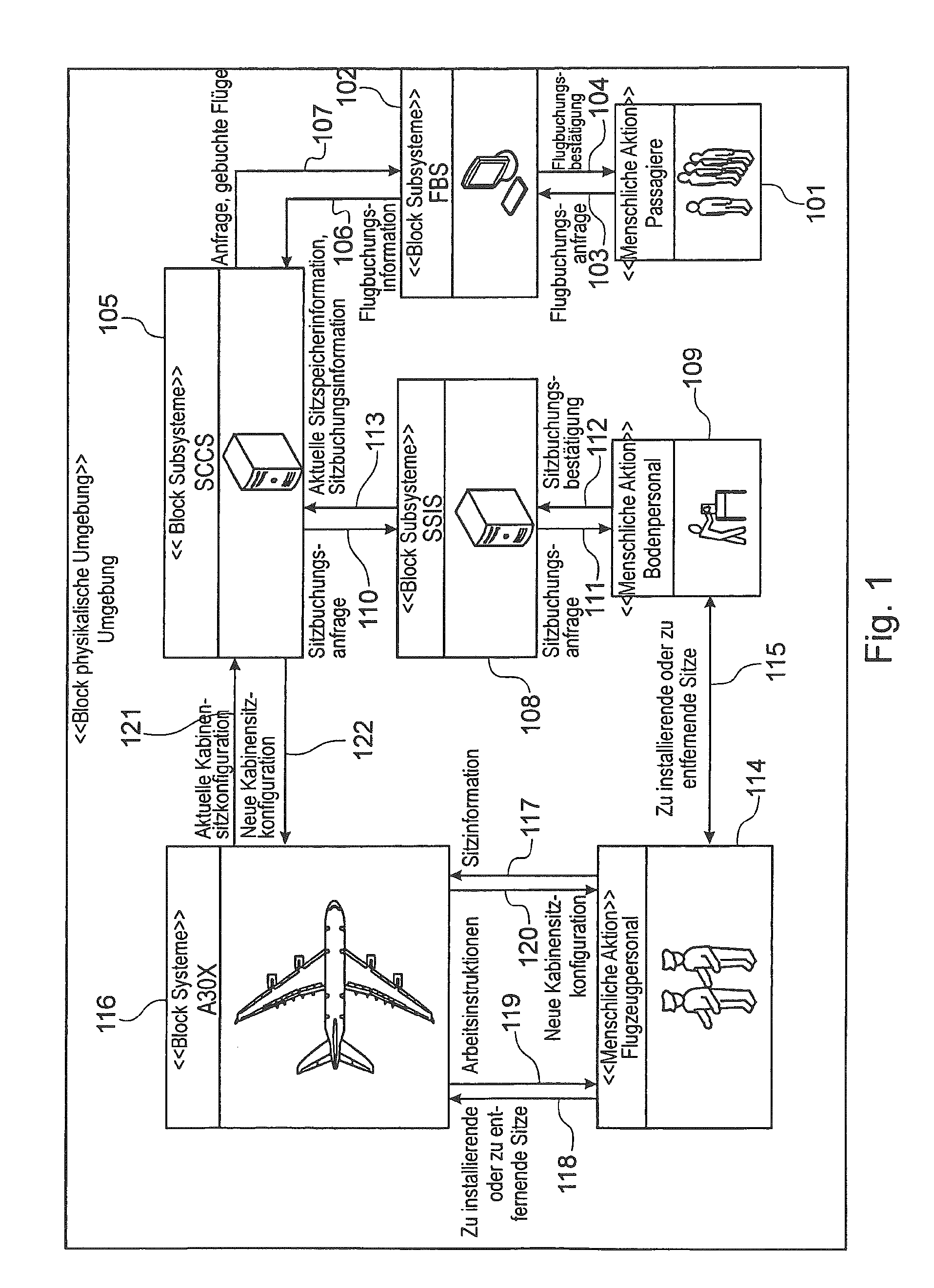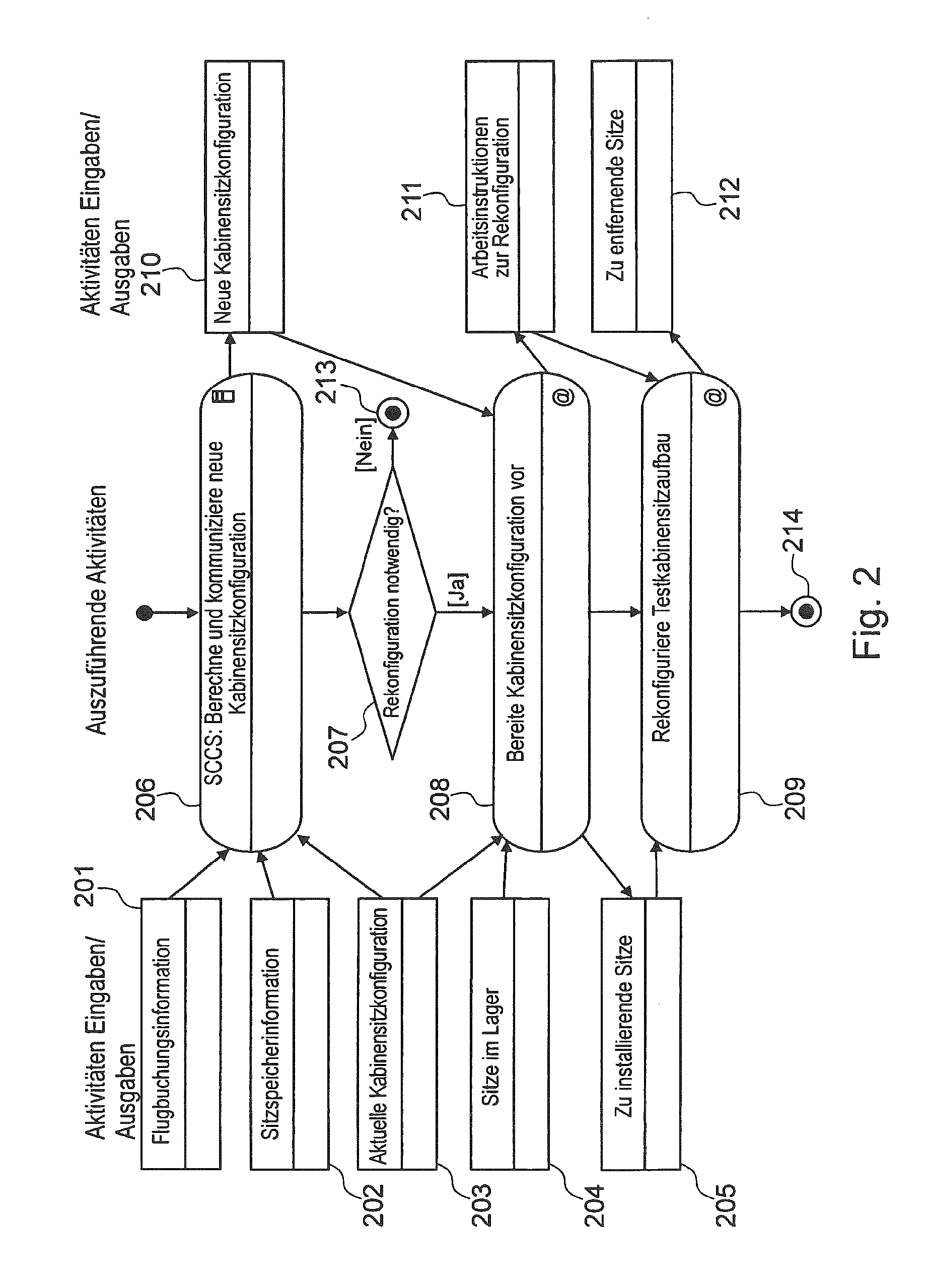Variable Seat Separation Adjustment In An Airplane
a seat separation and airplane technology, applied in the field of seat configuration in aircraft, can solve the problems of not being able to implement a short-term adaptation to greater seating comfort and not being able to offer passengers greater comfort, and achieve the effect of improving the adaptable seat configuration
- Summary
- Abstract
- Description
- Claims
- Application Information
AI Technical Summary
Benefits of technology
Problems solved by technology
Method used
Image
Examples
Embodiment Construction
[0049]The illustrations in the figures are diagrammatic and not to scale.
[0050]In the following description of the figures the same reference characters are used for identical or similar elements.
[0051]FIG. 1 shows a diagrammatic view of an information flow relating to the seat configuration planning and a subsequent seat configuration. The passengers 101 make a request to the flight booking system FBS 102 relating to seat booking. This may be followed by a flight booking confirmation (see arrows 103, 104).
[0052]Subsequently, the flight booking information is forwarded by the seat booking system to a subsystem SCCS 105. Prior to this, the SCCS 105 has, for example, transmitted a corresponding request to the FBS 102 (see arrows 106, 107).
[0053]Furthermore, a so-called SSIS 108 is provided, which communicates with the SCCS 105 and the ground staff 109. For example, a request relating to a seat booking is transmitted by the SCCS 105 to the SSIS 108 (see arrow 110). This request is then...
PUM
 Login to View More
Login to View More Abstract
Description
Claims
Application Information
 Login to View More
Login to View More - R&D
- Intellectual Property
- Life Sciences
- Materials
- Tech Scout
- Unparalleled Data Quality
- Higher Quality Content
- 60% Fewer Hallucinations
Browse by: Latest US Patents, China's latest patents, Technical Efficacy Thesaurus, Application Domain, Technology Topic, Popular Technical Reports.
© 2025 PatSnap. All rights reserved.Legal|Privacy policy|Modern Slavery Act Transparency Statement|Sitemap|About US| Contact US: help@patsnap.com



